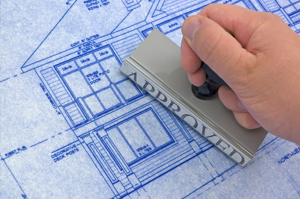 Many property owners will, at one time or another, wish to undertake a change to either the land or buildings that they own. Planning or Listed Building Applications may be required. Securing Planning or Listed Building Permission can be and is often difficult. Securing a consent that delivers exactly what the client wants may present an even bigger challenge.
Many property owners will, at one time or another, wish to undertake a change to either the land or buildings that they own. Planning or Listed Building Applications may be required. Securing Planning or Listed Building Permission can be and is often difficult. Securing a consent that delivers exactly what the client wants may present an even bigger challenge.
We have many years’ experience in preparing and submitting Planning, Listed Building Applications and Conservation Area Consent applications or application for consent of reserved matters. In addition we often prepare planning statements or impact assessments.
Dealing with planning issues is becoming an increasingly complex task. Where required we will work with a select range of specialist planning consultants who are able to work with us, bringing specialist knowledge and skills to bear to the advantage of our clients, in securing the consent required.
From simple applications to extending retail, commercial or residential property; or large scale penthouse or basement development schemes, we are able to draw on our wide understanding of construction, refurbishment, alteration and extension work to assist you with achieving your development and alteration ambitions. We are well placed to deal with heritage or conservation matters and the alteration of Listed Buildings.
Listed Building Applications
A listed building application is a formal request submitted to the local planning authority seeking consent to carry out alterations, extensions, or demolition work on a building or structure that has been designated as a listed historic building.
Listed buildings are those that have been identified as possessing special architectural or historic interest and are legally protected due to their significance. Any proposed changes to a listed building, whether internal or external, that could potentially impact its special character or historic fabric, require prior approval from the relevant planning authority.
The listed building application serves as the official mechanism for property owners or developers to seek permission for their proposed works. It is a comprehensive document that outlines the details of the intended alterations, extensions, or demolition, accompanied by supporting materials such as architectural drawings, plans, specifications, and heritage statements.
Obtaining listed building consent through the application process is necessary for several critical reasons:
Legal requirement: Listed buildings are protected by law, specifically the Planning (Listed Buildings and Conservation Areas) Act 1990 in England and Wales, and equivalent legislation in Scotland and Northern Ireland. Any unauthorised works that could affect the special interest of a listed building are considered a criminal offence, subject to potential fines or enforcement action.
Preservation of historic significance: The purpose of the listed building application process is to ensure that any proposed changes do not compromise or diminish the architectural or historic significance of the building. The planning authority’s role is to carefully assess the potential impact of the proposed works and determine whether they are appropriate and in keeping with the building’s character.
Maintaining historic integrity: Listed buildings often feature unique architectural elements, construction methods, and materials that contribute to their historic value. The application process helps to ensure that any alterations or extensions are carried out in a sensitive manner, using appropriate materials and techniques that respect the building’s integrity.
Avoiding irreversible damage: Unauthorised or inappropriate works on a listed building can result in irreversible damage to its historic fabric, potentially leading to the loss of significant heritage assets. The application process serves as a safeguard against such damage.
Building surveyors with expertise in listed historic buildings can play a crucial role in assisting clients throughout the listed building application process. Their involvement can help increase the chances of obtaining approval and ensure that the proposed works are carried out in compliance with regulations and best practices. Here are some ways a building surveyor can assist:
Application preparation: Building surveyors can help clients prepare comprehensive and detailed listed building applications, ensuring that all required information and supporting documentation are provided. This includes preparing architectural drawings, plans, specifications, and heritage statements that accurately represent the proposed works.
Compliance assessment: Building surveyors can assess the proposed works and advise clients on their compliance with listed building regulations, conservation area policies, and any other relevant guidelines. This helps identify potential issues or areas of concern that may need to be addressed before submission.
Heritage impact assessment: In some cases, a heritage impact assessment may be required to evaluate the potential impact of the proposed works on the historic significance of the building. Building surveyors can conduct these assessments and provide professional recommendations to mitigate any adverse effects.
Material and technique guidance: Building surveyors can advise on the appropriate materials, construction techniques, and approaches to be used for the proposed alterations or extensions, ensuring they are compatible with the historic fabric of the building and comply with regulations.
Planning authority liaison: Building surveyors can act as intermediaries between clients and the local planning authority, representing their interests and facilitating discussions regarding the proposed works. They can provide clarifications, address concerns, and negotiate solutions to increase the chances of approval.
Consent negotiation: In cases where the planning authority raises objections or requests modifications to the proposed works, building surveyors can negotiate on behalf of their clients, proposing alternative solutions or compromises that meet both the client’s needs and the conservation requirements.
Project management: Once listed building consent is obtained, building surveyors can oversee and manage the execution of the approved works, ensuring that they are carried out in accordance with the approved plans, using appropriate materials and techniques, and adhering to best practices for heritage conservation.
